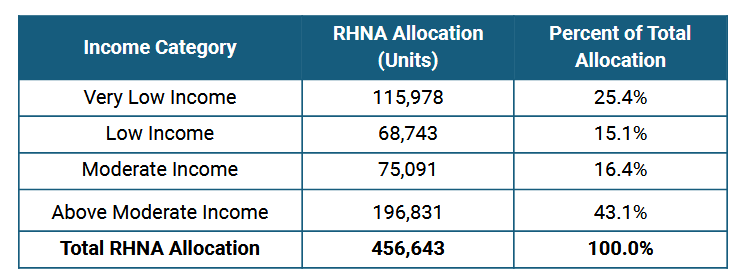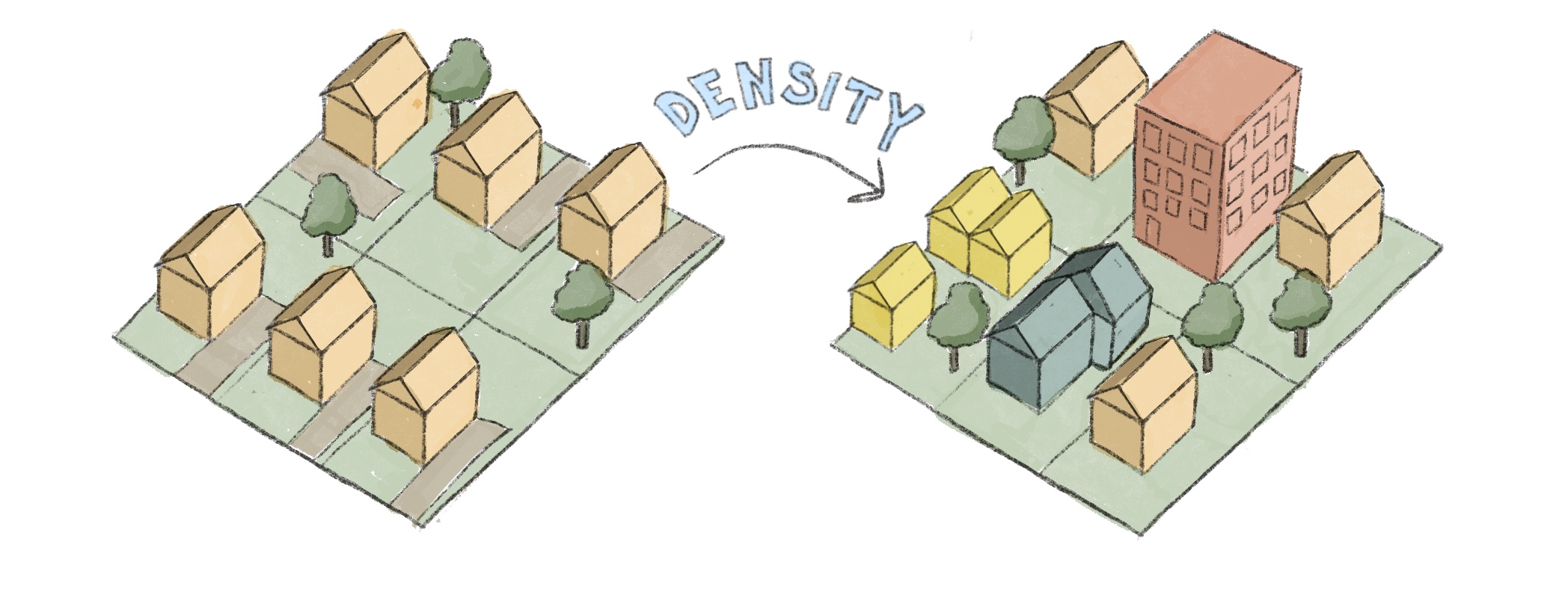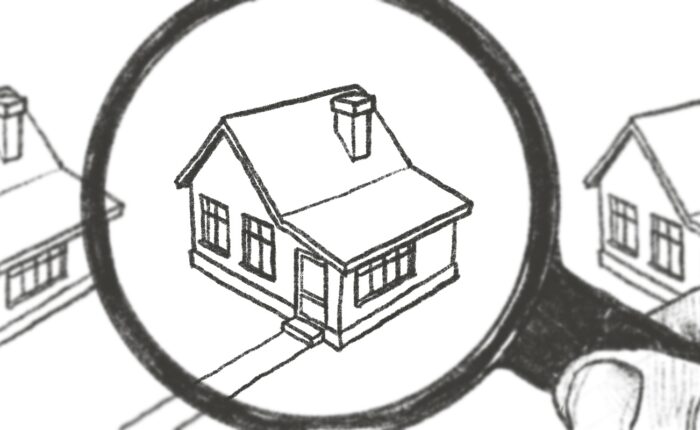Our previous blogs in this Affordable Housing series took a peek at the history of how we got to the current housing shortage, and then highlighted a few of the big “Streamlining” bills. If you haven’t already, check out our recent articles:
- Why is Housing in Los Angeles So Expensive? (Part 1)
- Why is Housing in Los Angeles So Expensive? (Part 2)
- Housing Bills 101
Intro
Now we’re doing an overview of some of the new density-related bills passed by the State of California. Since 1969, California has required local governments to implement plans to meet housing needs in each city/county established by the RHNA (Regional Housing Needs Allocation) process. During this process, which is repeated every eight years, the state determines the overall housing needs and distributes them among the jurisdictions within that region. The most recent report states that the City of Los Angeles must accommodate an additional 456,643 units between 2021-2029, of which 184,721 (~40%) must be affordable for low/very low income households.

Realistically, the city is currently zoned to create 230,964 of these required units. The 255k shortfall must be obtained by city-wide rezoning programs that have been initiated in the last couple years. California has also taken it upon itself to help the issue statewide by enacting several density-focused bills to minimize the deficit. Here are a few:
SB9 – California Housing Opportunity and More Efficiency (HOME) Act
Effective January 1, 2022
Summary
In California, Senate Bill 9 (SB9) became law throughout the state on January 1, 2022. The new ordinance allows a single-family zoned lot to be split into two smaller parcels, as well as the option to build up to two units on each half. This new law overrides local zoning laws where they conflict with the state ordinance, essentially allowing a total of four “housing units” (i.e., a house or ADU) to be built. The new smaller parcels have to be approximately equal in size (no smaller than 40% of the original lot, but a minimum of 1200sf) and are subdivided via a ministerial process for an “urban lot split”.
We covered this in a previous blog, and City Planning has since created an SB9 implementation memo to help direct the city on how the bill applies in Los Angeles.
SB10 – Local Control for Increased Housing Density
NOT YET ADOPTED IN LA – This requires the city to act and update zoning requirements, but the city has chosen not to do so at the time of publishing this article.
Summary
This bill allows for cities to independently allow increased density to target the “missing middle” zones and would allow up to 10 homes per parcel through rezoning. The goal of this bill is to replenish the housing shortage by creating opportunities for multi-generational households and affordable options for young families or seniors wishing to age in place.
AB1763 / AB2345 – State Density Bonus Law
AB1763 passed September 3, 2019, and was then amended/”clarified” by AB2345 effective January 1, 2021
Summary
This bill amends the State Density Bonus Law, including provisions for parking and 100% affordable housing projects created by AB1763. A few of the key components include:
- Density bonus of 80%
- Unlimited density and height increase of 33 feet or 3 stories for 100% affordable housing near major transit
- Zero parking requirements for special needs housing near transit and any supportive housing project
- An additional concession/incentive allowed for ministerial review
AB2556 – Affordable Housing Determination
Effective September 1, 2020
Summary
This bill amended AB2222 with changes to the State Density Bonus Law to ensure there is no loss of existing affordable units or rent-stabilized units when a new project is proposed. The law also ensures rental affordability for a period of 55 years. All rentals that exist at the time of application, or those that have been vacated/demolished in the prior five years, must be replaced one-for-one. The housing department has a new review process to determine the income/affordability levels of the existing units which will then be covenanted and monitored annually for a period of 55 years.
AB1482 – California Tenant Protection Act of 2019
Effective January 1, 2020
Summary
This bill requires landlords to have “just cause” in order to evict tenants and limits annual rent increases to no more than 5% plus a local inflation rate, or 10%, whichever is lower. Tenants cannot waive their right to these limits. A few housing units exempt from rent cap and/or “just cause” regulations are:
- Units built within the last 15 years
- Deed-restricted units or restrictions limiting the affordability to low- or moderate-income
- Some dormitories
- Two-unit properties if the second unit is owner-occupied
- Single family homes or condos, as long as not owned by a trust, corporation, or LLC and have provided written notice
- Units subject to rent control
- Units already subject to a local ordinance requiring “just cause”
AB2097 – No Minimum Parking Requirements
Effective September 22, 2022
Summary
Ending this article with a fun one: housing developers and business owners in California will no longer be required to include parking spots for residents and patrons if the project is located within a half-mile from transit. Currently, parking requirements can consume large areas of land and can cause construction costs to escalate (hello subterranean parking!). The goal of this bill is to promote smaller developments that are more affordable. Parking minimums make it near impossible to produce the sorts of small buildings that might be affordable to middle-of-the-road wage earners.
Quick Case Study: Michael Schneider, a founder of Streets For All, noted in an op-ed in The Times that San Diego saw a rise in affordable housing development after it dropped parking minimums.
How do I check if my project is eligible for reduced parking? Head over to Zimas. Under Planning and Zoning, there is a section for AB2097 that indicates if your project is eligible for reduced parking.
In Closing
Now that we’ve gone over the “why” and “how” the state is trying to fix the housing shortage, our next article will cover a few case studies that we’re witnessing firsthand in our office. And as a teaser…there are some unintended consequences to these bills. Stay tuned.
As always, if you’re wondering how this could affect you or one of your properties, give us a call.
Tracy A. Stone Architect has experience with a variety of affordable housing projects and can provide a feasibility study to evaluate the best development options and state/assembly bills that may apply to your lot(s). Contact us here for more information.
Be sure to check out some of our previous blogs on housing in Los Angeles:



